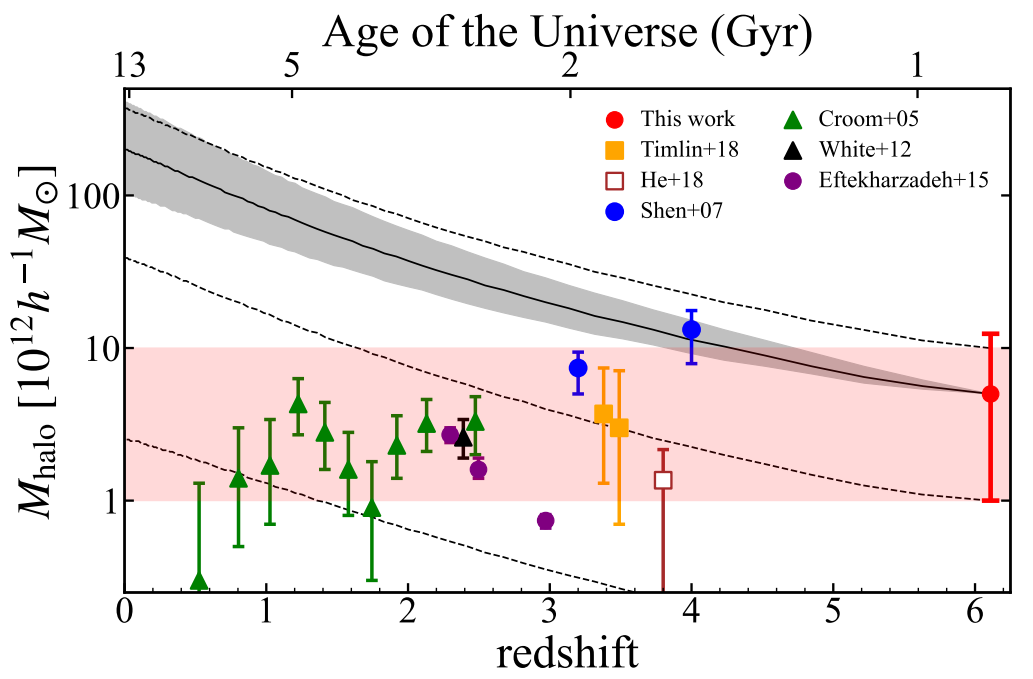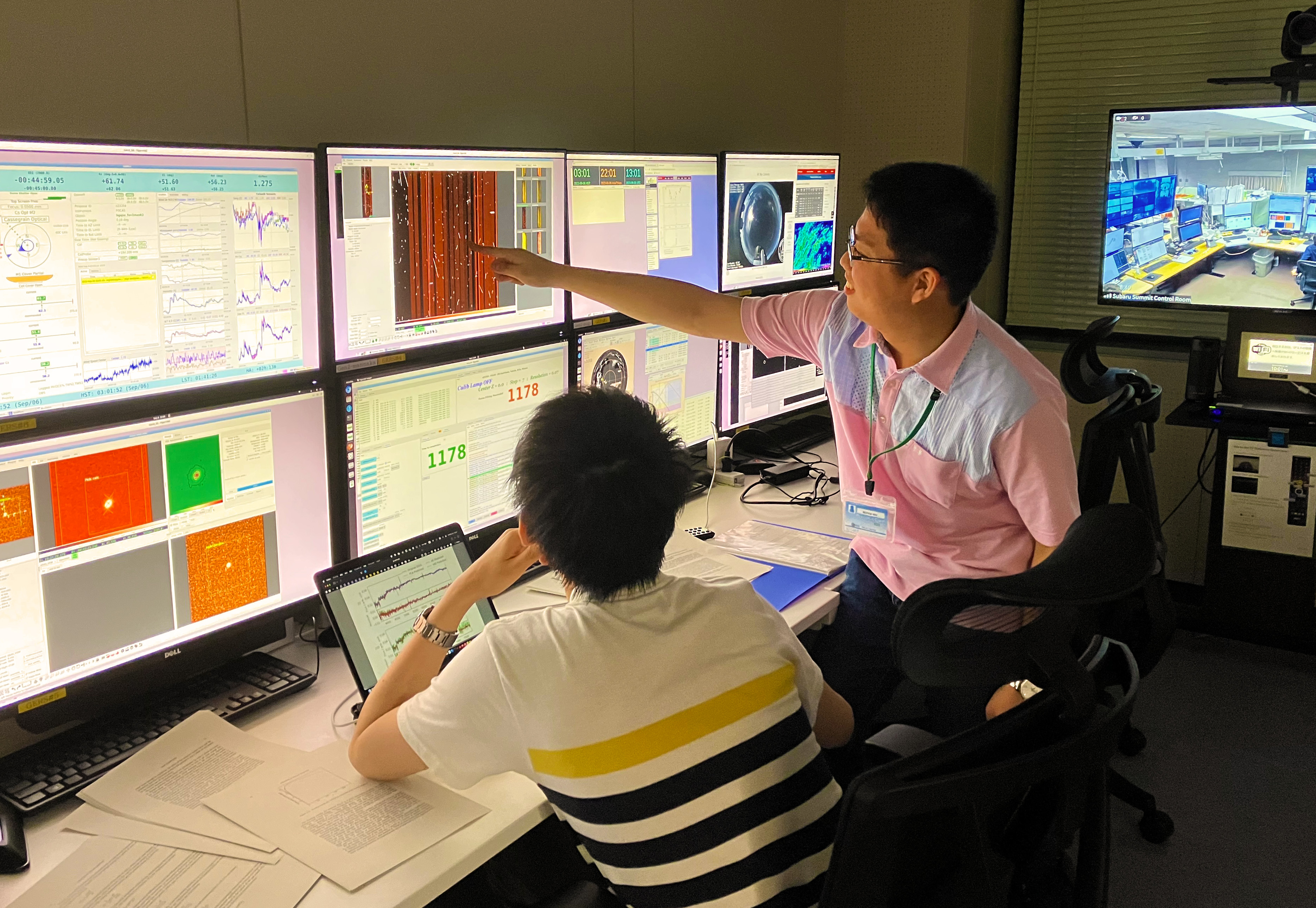
The farthest quasars. The vertical axis shows the mass of dark matter halos surrounding quasars, galaxies with active cores. The horizontal axis shows the age of the universe with the present on the left. Given so many properties of the universe change on these time scales, it’s surprising that the DMH mass corresponding to a quasar has remained stable. ©2023 Arita et al. CC BY
At the center of every galaxy is a supermassive black hole. Beyond a certain size, these become active, emitting huge amounts of radiation, and are then called quasars. It is thought these are activated by the presence of massive dark matter halos (DMH) surrounding the galaxy, directing matter towards the center, feeding the black hole. A team including researchers from the University of Tokyo have, for the first time, surveyed hundreds of ancient quasars and found this behavior is very consistent throughout history. This is surprising, as many large-scale processes show variation throughout the life of the universe, so the mechanism of quasar activation could have implications for the evolution of the entire universe.
Measuring the mass of DMHs is not easy; it’s famously a very elusive substance, if substance is even the right word to use, given the actual nature of dark matter is unknown. We only know it exists at all due to its gravitational impact on large structures such as galaxies. Thus, dark matter can only be measured by making observations about its gravitational effects on things. This includes the way it might pull on something or affect its movement, or through the lensing (bending of light) of objects behind a suspected area of dark matter.

Making observations. Principle investigator Junya Arita and co-investigator, Yoshihiro Takeda making observations in the control room of the National Astronomical Observatory of Japan. ©2023 Nobunari Kashikawa CC BY
The challenge becomes greater at large distances, given how weak the light from more distant, and therefore ancient, phenomena can be. But this did not stop Professor Nobunari Kashikawa from the Department of Astronomy, and his team, from trying to answer a long-standing question in astronomy: How are black holes born, and how do they grow? The researchers are especially keen to explore this in relation to supermassive black holes, the largest kind, which exist in the heart of every galaxy. These would be very difficult to study were it not for the fact that some grow so massive they begin to output incredibly powerful jets of matter or spheres of radiation that in either case become what we call quasars. These are so powerful that even at large distances, we can now observe them using modern techniques.
“We measured for the first time the typical mass for dark matter halos surrounding an active black hole in the universe about 13 billion years ago,” said Kashikawa. “We find the DMH mass of quasars is pretty constant at about 10 trillion times the mass of our sun. Such measurements have been made for more recent DMH around quasars, and those measurements are strikingly similar to what we see for more ancient quasars. This is interesting because it suggests there is a characteristic DMH mass which seems to activate a quasar, regardless of whether it happened billions of years ago or right now.”
Quasars at great distances appear faint, as the light which left them long ago has spread out, was absorbed by intervening matter, and has been stretched into nearly invisible infrared wavelengths due to the universe expanding over time. So Kashikawa and his team, whose project began in 2016, used multiple surveys of the sky which incorporated a range of different instruments, the main one being Japan’s Subaru Telescope, located in U.S. state of Hawaii.
“Upgrades allowed Subaru to see farther than ever, but we can learn more by expanding observation projects internationally,” said Kashikawa. “The U.S.-based Vera C. Rubin Observatory and even the space-based Euclid satellite, launched by the EU this year, will scan a larger area of the sky and find more DMH around quasars. We can build a more complete picture of the relationship between galaxies and supermassive black holes. That might help inform our theories about how black holes form and grow.”








